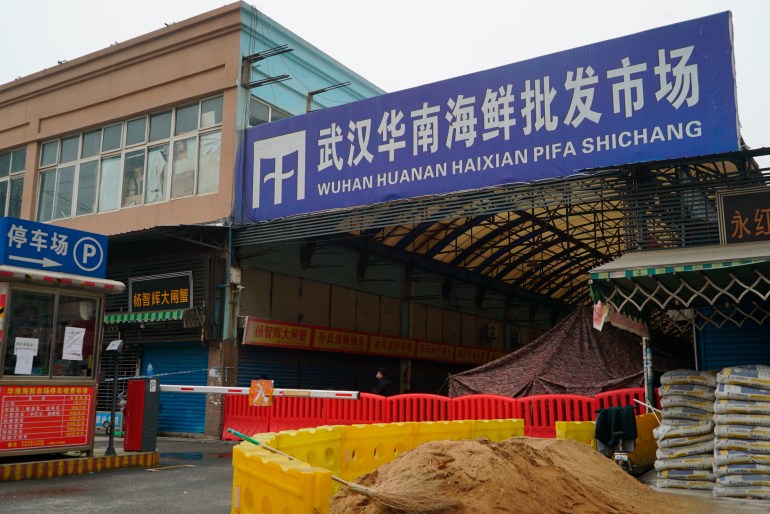Republican-controlled committee says coronavirus likely emerged from a ‘laboratory or research-related accident’.

A committee of the United States Congress has backed the so-called lab leak theory as the likely cause of the COVID-19 pandemic.
In a report released on Monday, the Republican-controlled House of Representatives Select Subcommittee on the Coronavirus Crisis said it had concluded that the coronavirus “likely emerged because of a laboratory or research related accident”.
The 520-page report, which has been two years in the making, looked at the federal and state-level response to the pandemic, as well as its origins and vaccination efforts.
“This work will help the United States, and the world, predict the next pandemic, prepare for the next pandemic, protect ourselves from the next pandemic, and hopefully prevent the next pandemic,” Brad Wenstrup, the Republican chairman of the panel, said in a letter to Congress.
Among the report’s headline conclusions was that the US National Institutes of Health (NIS) funded contentious “gain-of-function” research – which enhances viruses to find ways to combat them – at the Wuhan Institute of Virology in China prior to the outbreak.

Cases of COVID-19 were first identified in Wuhan – located in central China’s Hubei province – in December 2019, with the city widely believed to be where the virus first emerged.
The virus quickly spread worldwide, killing more than 7 million people and creating turmoil in the global economy as countries closed borders and ordered lockdowns.
While US federal agencies, the World Health Organization and scientists worldwide have sought to determine the origins of COVID-19, a consensus has not emerged.
Many researchers believe the virus had a zoonotic origin – spreading from animals to humans – and may have been transmitted at a wet market in Wuhan.
The US Department of Energy assessed with “low confidence” in an intelligence report last year that the virus most likely escaped from a lab.
The assertion echoed that of the Federal Bureau of Investigation (FBI), which said in 2021 with “moderate confidence” that the virus probably spread after a laboratory mishap.
The House committee was convinced by the lab leak theory after meeting 25 times over the past two years, conducting more than 30 transcribed interviews and reviewing more than a million pages of documents.

As part of that investigation, members of the Republican-controlled congressional panel held two days of interviews with Anthony Fauci, who became the subject of conspiracy theories about the pandemic’s origins.
Republicans have accused Fauci, who retired in December 2022 after 54 years at the NIH, of being responsible for causing the worst pandemic in a century by approving funding for Chinese scientists they believe manufactured SARS-CoV-2, the virus that causes COVID-19.
Fauci, who regularly clashed with US President-elect Donald Trump during his first term, has faced accusations of suppressing the theory that COVID-19 originated from a lab leak in China.
The 83-year-old immunologist, who now lives with security protection due to death threats against his family, told the panel at a public hearing in June that it would have been “molecularly impossible” for the bat viruses studied at the Wuhan lab to turn into the virus that caused the pandemic.
“I’ve also been very, very clear, and said multiple times, that I don’t think the concept of there being a lab [leak] is inherently a conspiracy theory,” Fauci said.
“What is conspiracy is the kind of distortions of that particular subject, like, it was a lab leak and I was parachuted into the CIA like Jason Bourne and told the CIA that they should really not be talking about a lab leak,” he said.
The probe also found that lockdowns “did more harm than good” and mask mandates were “ineffective at controlling the spread of Covid-19”, contradicting research showing that masking in public does reduce transmission rates.
While social distancing guidelines came under criticism, the panel concluded that the travel restrictions that were put in place had saved lives.
The panel labelled Trump’s publicly-funded project to develop COVID vaccines – named Operation Warp Speed – a “tremendous success”, but concluded that school closures would have an “enduring impact” on US children.